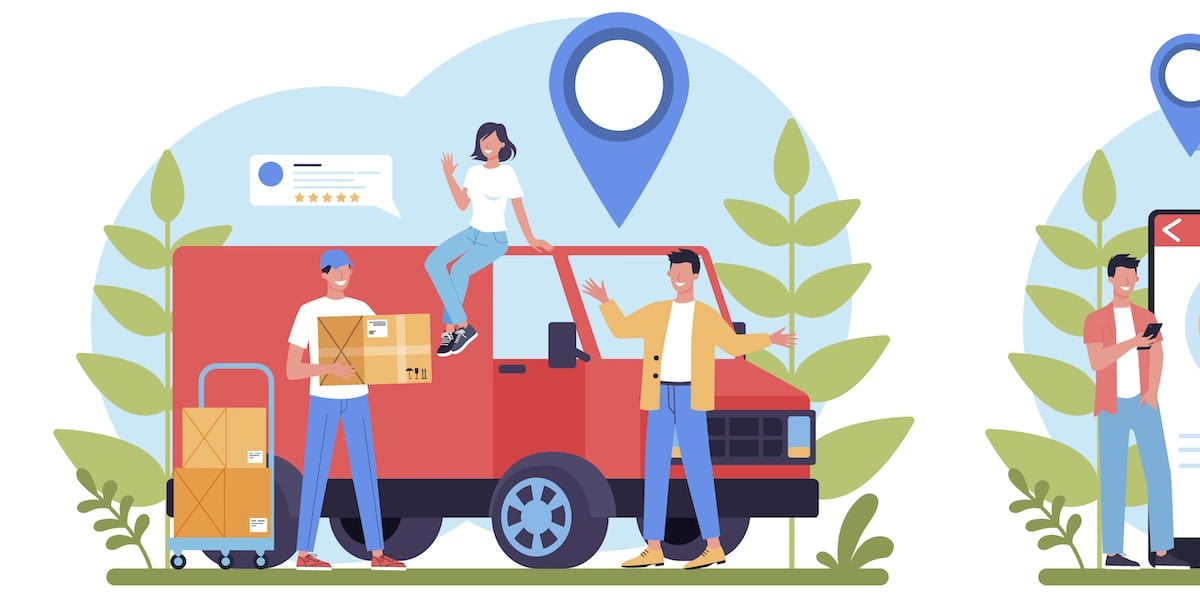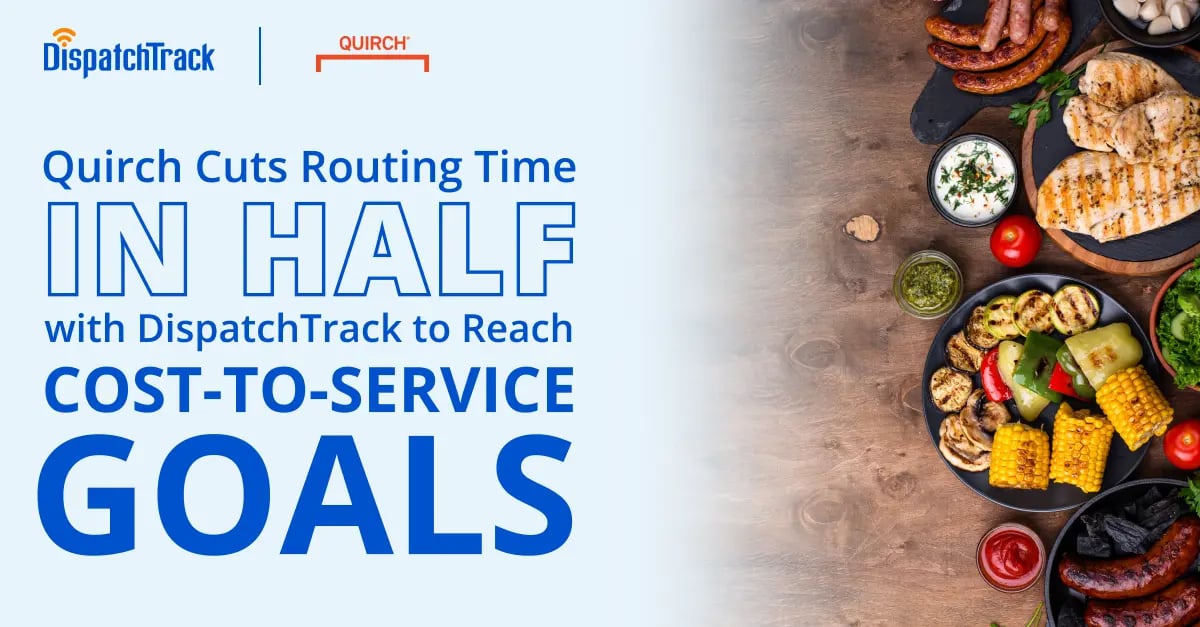The fact that a number of technology vendors claim to offer something called “hybrid routing” should tell you a lot. If you’re in the world of B2B deliveries, you know that the benefits of dynamic route optimization—the process of creating the shortest and best delivery routes more or less from scratch each day—can’t be applied directly to things like food distribution, beverage wholesaling, uniform and linen delivery, etc. But static routing has its limitations as well, and anyone who’s interested in routing (which is to say: anyone who’s interested in delivering goods in an efficient way) will be on the lookout for ways to gain efficiency.
 This is where hybrid routing comes in. At its simplest, it represents a cross between static and dynamic routing—in other words, it’s one method of applying some of the efficiency improvements and potential cost savings that come from dynamic routing and applying them to business cases that traditionally involve mostly static routes.
This is where hybrid routing comes in. At its simplest, it represents a cross between static and dynamic routing—in other words, it’s one method of applying some of the efficiency improvements and potential cost savings that come from dynamic routing and applying them to business cases that traditionally involve mostly static routes.
But the mere fact of having combined these two disparate forms of routing doesn’t tell you everything you need to know. Not all hybrid routing models are created equal, and hybrid routing processes that don’t actually fit your business case can wind up doing more harm than good. That’s why finding true hybrid routing that’s powered by AI and backed by powerful SaaS technology is such a crucial part of powering a digital transformation as a B2B delivery organization.
Challenges in Static and Dynamic Routing
The reasons why purely dynamic routing doesn’t work for food and beverage distribution (to say nothing of other B2B use cases) have been pretty well documented. Most of your customers will have preferred, recurring delivery time slots, so it doesn’t make sense to start from scratch every day or even every week when it comes to creating routes. Your customers might even know which route number they’re on and look forward to seeing the same driver each delivery day—when you try to create more efficient routes dynamically, it throws the whole business into chaos.
The problem is that purely static routing also causes chaos. Sure, many of your customers will be ordering the same things in the same quantities week in and week out—but many of them won’t. Many of them will only order from you once or twice before they drop off your roster, others will be ordering for the first time, and many long time customers will need an extra dropoff on an off day or will change their order mixes based on the latest trend in fizzy waters or will skip ordering a particular week because they didn’t sell as much Budweiser as they expected to during the Super Bowl.
The fact that some deliveries are predictable doesn’t mean that all of them are. When you’re stuck relying on static routes to get the job done, it’s incredibly challenging to achieve the level of efficiency you need to ensure that all of your stops and routes are profitable. Route optimization is difficult enough to begin with—it’s not something you can really accomplish by hand once you start accounting for things like time window requests and other customer requirements—and once you’re trying to create efficient routes that already have immovable stops in them you’re doomed to at least a certain degree of inefficiency.
Enter Hybrid Routing
Neither static nor dynamic routing really cuts it for food and beverage distribution, uniform and linen deliveries, or almost any other B2B delivery or scheduling use case—which is why a hybrid approach is becoming more and more of a necessity for B2B delivery organizations. But what does real hybrid routing look like?
At the highest level, hybrid routing involves routing dynamically around a partial “skeleton route” of stops that have already been routed. In other words, you start with a static route (loaded with your recurring customers within their preferred date and time windows) and you dynamically build the full route out from there. But this obscures the real complexity of getting this right—after all, it’s difficult to maintain efficiency when you’re working with so many constraints, and there’s always a risk that you won’t actually be able to deliver on time to your customers.
This is why AI is such an important part of the equation here. For starters, integrating AI into this process enables you to consider a larger number of factors with a greater degree of nuance without losing efficiency. For instance, this might mean having multiple preferred time windows for certain customers and letting the system figure out which one makes sense, or using a sliding scale to indicate which stops absolutely have to stay in a particular window vs which ones have some wiggle room.
At the same time, AI gives you the power to more effectively predict delivery outcomes, e.g. arrival times. This is absolutely paramount. If you can’t accurately predict when a particular truck is going to arrive at a particular stop, you have to build in buffer around your important stops, and the result is that you lose efficiency. If, by contrast, you can pinpoint when a particular truck should arrive based on historical traffic patterns, driver speeds, and other factors, you can actually execute on the most efficient version of your route plan. Contrast this with other versions of hybrid routing in which your static plans are rigid and you can’t easily predict ETAs—the differences can be huge.
How to Leverage Hybrid Routing to Delight Your Customers
Okay, let’s say you’ve got AI-powered routing technology that lets you operate on a hybrid of static and dynamic route optimization. What does that look like in practice? In other words, what should you be looking for in terms of features and capabilities when it comes to hybrid routing technology?
Here are a few things to look for:
- The ability to pin customers to particular days, times, or route positions
- Multiple time window preferences for each client
- What-if scenarios for testing out potential route planning alternatives
- AI-integration for accurate ETAs
- Integration with strategic planning and territory management to enable you to avoid the silos that crop up in between delivery planning and execution
- Live delivery tracking (with AI-aware ETA updates) to enable you to spot exceptions in real time and keep plans on track
- Cloud technology that enables you to plan and optimize routes at scale in a matter of seconds
- Customer communication tools to let your customers know when to expect their deliveries
By putting all these pieces together, the right hybrid optimization technology enables you to make sure that you’re delivering all your customers at the right time. For your larger customers, “the right time” is almost always going to mean the time that they requested—for smaller clients, that might mean that when they get deliveries depends on when it’s cost-effective for you, but they'll get delivery notifications and be able to track their orders in real time so they know when to expect the driver.
Ultimately, this is the biggest difference between real, effective hybrid route optimization technology and less useful forms of the same concept: the former is integrated within a larger delivery management system that integrates planning and execution to produce plans that actually work. Yes, that takes AI-powered technology that connects a wide range of different functions—but the end result is true hybrid route optimization that makes B2B delivery organizations more profitable.
